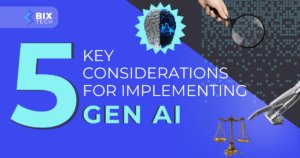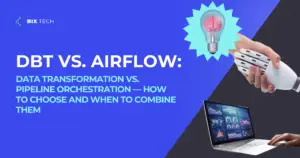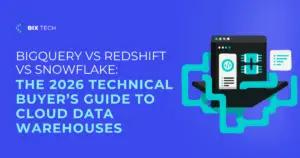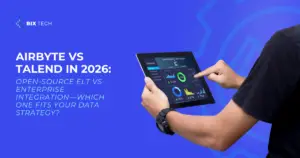The concept of Vibe Coding – in other words, using Artificial Intelligence to generate solutions quickly and intuitively – has been gaining ground in many technology and Software Development teams. The promise is tempting: creating applications, screens, prototypes and even end-to-end applications in just a few minutes, accelerating ideation like never before.
But is this approach sufficient for solutions that need to go beyond the prototype and reach production? Continue reading to understand what Vibe Coding is, its advantages, and the dangers of adopting this practice without due care. In addition, we will discuss why security should be treated as an integral part of any development process.
What is Vibe Coding?
Vibe Coding is the use of Generative AI tools to accelerate the development of digital solutions in a fast, visual and simplified way. The idea of this approach is to get “hands-on” and generate code, interfaces and flows with minimal technical effort, always focusing on experience and speed.
This process is especially useful in the ideation phase: it allows you to test concepts, validate hypotheses with users, demonstrate usability and experiment with little or no dependence on technical teams.
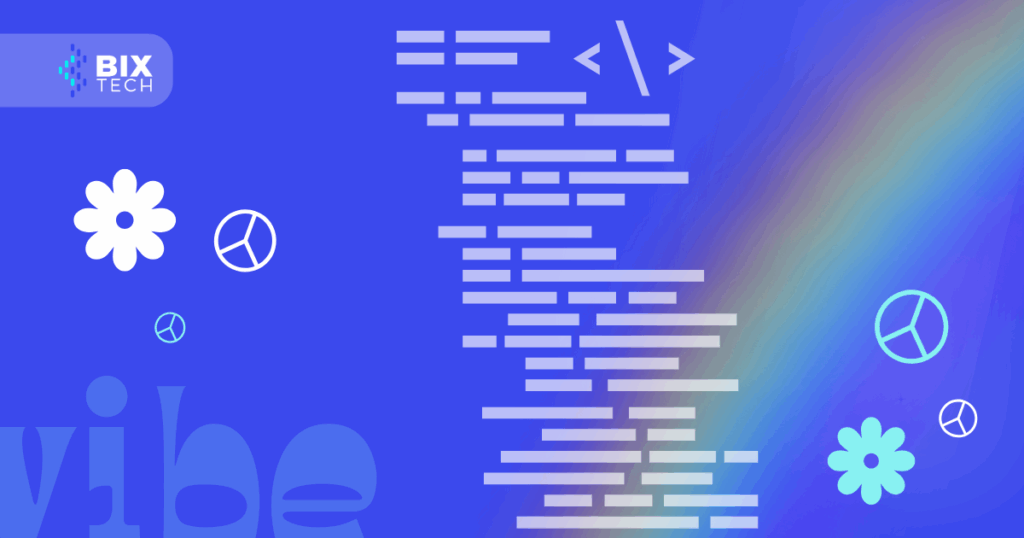
What are the benefits of Vibe Coding?
One of the biggest advantages of this practice is the speed at which prototypes or MVPs are created – in other words, initial versions of applications. In a few hours or even minutes, you can develop ideas that could take days or weeks to get off the ground.
In addition, if you are part of a non-technical team (product, design or even business, for example), you can test or even come up with more tangible ideas about solutions without needing to know and/or write codes manually. Finally, using Vibe Coding makes it easier to test variations in flows, interfaces and experiences.
The limits that even AI cannot overcome
Despite the undeniable benefits, it is essential to recognize the limitations and risks involved in using Vibe Coding – especially if you are considering transforming these prototypes into real products.
The S for Security in Vibe Coding
Did you notice that there is no letter S in Vibe Coding, right? This is not just a joke that went viral on the internet in the latest discussions on the subject. Creating AI solutions without a structured security approach can leave critical gaps in the code.
In a scenario where cybersecurity for companies is at the center of discussions and data leaks are becoming increasingly common, security is no longer a differentiator but a basic requirement. It needs to be integrated into the entire software development cycle, from ideation to delivery.
Reactive AI vs. Proactive Security
AI works reactively, that is, it responds to what is requested, but does not anticipate risks. If security is not explicitly addressed, the generated code tends to ignore essential protection practices. This increases the risk of vulnerabilities and is often only noticed too late.
When you develop a solution with Vibe Coding, the AI does not think about security on its own. And even if you ask it to, it cannot apply these practices consistently across the entire context – which ends up leaving holes along the way.
Pedro Martins, Solutions Architect at BIX Tech
Large companies are pausing AI projects due to lack of security
At the end of April this year, Patrick Opet, CISO (Chief Information Security Officer) of J.P. Morgan, a leading global financial services company, published an open letter expressing serious concerns about the use of AI solutions such as Vibe Coding. According to the executive, 78% of AI implementations in companies occur without adequate security. Among the main risks, he cites:
- The difficulty in explaining how models arrived at certain decisions;
- The increase in vulnerabilities in AI-generated systems;
- The absence of governance and accountability frameworks.
In light of this scenario, the bank is investing more than US$2 billion in security and pausing AI projects until it is guaranteed to be protected. The recommendation? Create teams dedicated to AI security, use red teaming, ensure clear documentation and adopt robust governance frameworks.
Security starts with ideation
If you’ve come this far, you already understand: security in software development is not just a checklist item before deployment. In fact, it starts at the ideation stage, continues through architecture, and should be present in all decisions throughout a product’s life cycle.
In this context, AI-based approaches such as Vibe Coding offer clear benefits. They accelerate prototyping, help non-technical stakeholders visualize flows and functionalities more clearly, and enable agile iteration cycles without requiring major engineering efforts in the early stages.
However, the same features that impress with their speed and practicality can hide significant risks when trying to transform prototypes into real solutions. AI is not yet capable of understanding the business context, anticipating threats, or applying security practices consistently. The generated code may seem well-structured at first glance, but leave important flaws hidden – especially in applications that handle sensitive data or critical processes.
This does not mean that the use of AI should be avoided, but rather that it must be done responsibly. The real risk lies in hasty and unsupervised adoption, disregarding security and governance practices that should have been present from the beginning. What seems like a time saver can, in practice, lead to financial losses, reputational damage and considerable technical rework.
Ensuring security from the first lines of code is a fundamental practice to protect not only users, but the future of the solution itself. References such as the OWASP Top 10 are important and valid, but they are not yet natively incorporated into generative models. Therefore, without the support of experts, the risk of putting a vulnerable application into production remains high. Security requires technical knowledge, business vision and experience – and, for now, it continues to be the role of people.
Ready to build secure, fast and reliable digital solutions?
Count on BIX Tech’s team of experts to transform ideas into scalable and protected products from the first line of code. Contact our experts and find out how we can support your next project with technical excellence and a focus on security.



